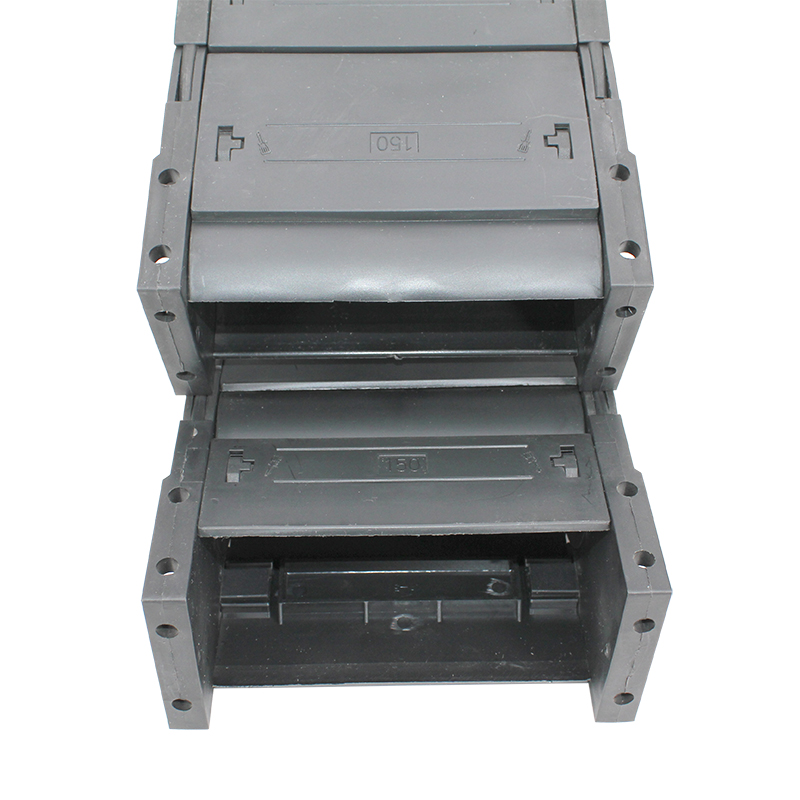Durable Plastic Cable Carrier Chains for Efficient Cable Management Solutions
Plastic Cable Carrier Chains An Essential Component for Modern Machinery
In today's fast-paced industrial world, efficiency and reliability are cornerstones for success. One crucial component that aids in achieving these goals is the plastic cable carrier chain, often referred to as an energy chain or drag chain. These innovative systems provide a practical solution for managing cables and hoses in various applications, from manufacturing to robotics.
What is a Plastic Cable Carrier Chain?
A plastic cable carrier chain is a system designed to protect and organize cables, hoses, and other flexible conduits as they move with machinery. Constructed from durable plastic materials, these chains consist of interconnected links that form a closed loop, allowing for seamless movement along a designated path. The chains guide the cables, preventing tangles, wear, and damage that could result from uncontrolled movement.
Key Features and Advantages
The use of plastic material in cable carrier chains offers several advantages over traditional metal-based carriers. Firstly, plastic chains are lightweight, making them easier to handle and install. This weight reduction can also lead to lower energy consumption in machinery, as less force is required to move the chains during operation.
Moreover, plastic cable carrier chains are resistant to corrosion, chemicals, and extreme temperatures. This resilience ensures a long operational life, reducing maintenance costs and downtime. The flexibility in design allows manufacturers to create chains tailored to specific applications, accommodating a wide range of sizes and lengths.
Another significant benefit is the quiet operation of plastic chains. Unlike metal chains, which can create noise as they move, plastic chains offer a quieter alternative, making them ideal for environments where noise reduction is a priority.
plastic cable carrier chain

Applications of Plastic Cable Carrier Chains
Plastic cable carrier chains find applications in numerous industries, including manufacturing, automotive, aerospace, and automation. In manufacturing facilities, these chains are commonly used to guide power, data, and control cables as machines move along predetermined paths. For robotics and automated systems, proper cable management is essential for safety and performance, making these chains an invaluable component.
In the aerospace industry, where reliability is crucial, plastic cable carrier chains are used to manage hydraulic and electrical lines in aircraft systems. The ability to withstand harsh conditions while maintaining flexibility ensures optimal functionality.
Future Trends
As technology continues to evolve, the demand for efficient and effective cable management systems grows. Future trends are likely to include further advancements in materials, enhancing the durability and functionality of plastic cable carrier chains. Innovations such as IoT integration and real-time monitoring may also become prevalent, allowing for smart cable management systems that can predict maintenance needs and improve operational efficiency.
Additionally, as industries move towards sustainability, manufacturers are exploring environmentally friendly materials for cable carrier chains. The development of biodegradable or recyclable options could address ecological concerns while maintaining performance standards.
Conclusion
Plastic cable carrier chains play a vital role in the modernization of industrial processes. Their combination of lightweight construction, durability, and versatility makes them an essential component in managing cables and hoses efficiently. As industries continue to innovate and evolve, the importance of effective cable management systems will only increase, solidifying the role of plastic cable carrier chains for years to come. By embracing these advancements, organizations can enhance their operational efficiency, reduce maintenance costs, and position themselves for future growth in an increasingly competitive landscape.








